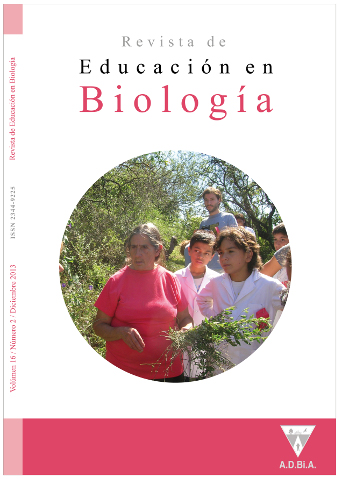Biological Sciences in Psychology Course of Studies at the National University of Rosario
Main Article Content
Abstract
The purpose of this thesis is to contribute to the study of the relationship between psychology and biology, in the context of psychologists’ educational training in the Psychology course of studies at the National University of Rosario. The following topics were developed: a) identification of the origins of the perception which established a lack of connection between psychology and biology, analyzing several historical stages of the psychological field in our country; b) analysis of the historical process of incorporating biological training to the Psychology course; and c) investigation of the perceptions heldby Psychology students, teachers and graduates as regards the importance of biological sciences in the training of psychologists. Biological Sciences are likened to positivism and medicine, and are considered to be opposed to psychoanalysis. Some students go from initial lack of knowledge to rejection, due to the difficulty implied by these subjects and their theoretical stance. Finally, in their professional practice, psychologists come to value biological knowledge in that it helps them to understand the complexity of the cases they need to tackle.
Article Details
How to Cite
Biological Sciences in Psychology Course of Studies at the National University of Rosario. (2013). Journal of Biology Education, 16(2), (pp. 127-132). https://doi.org/10.59524/2344-9225.v16.n2.22404
Section
Tesis

This work is licensed under a Creative Commons Attribution-NonCommercial-ShareAlike 4.0 International License.
Aquellos autores/as que tengan publicaciones con esta revista, aceptan los términos siguientes:- Los autores/as conservarán sus derechos de autor y garantizarán a la revista el derecho de primera publicación de su obra, el cuál estará simultáneamente sujeto a la Licencia de reconocimiento de Creative Commons que no se permite un uso comercial de la obra original ni de las posibles obras derivadas, la distribución de las cuales se debe hacer con una licencia igual a la que regula la obra original.
- Los autores/as podrán adoptar otros acuerdos de licencia no exclusiva de distribución de la versión de la obra publicada (p. ej.: depositarla en un archivo telemático institucional o publicarla en un volumen monográfico) siempre que se indique la publicación inicial en esta revista.
- Se recomienda a los autores/as difundir su obra a través de Internet (p. ej.: en archivos telemáticos institucionales o en su página web) después del proceso de publicación, lo cual puede producir intercambios interesantes y aumentar las citas de la obra publicada. (Véase El efecto del acceso abierto).
How to Cite
Biological Sciences in Psychology Course of Studies at the National University of Rosario. (2013). Journal of Biology Education, 16(2), (pp. 127-132). https://doi.org/10.59524/2344-9225.v16.n2.22404

